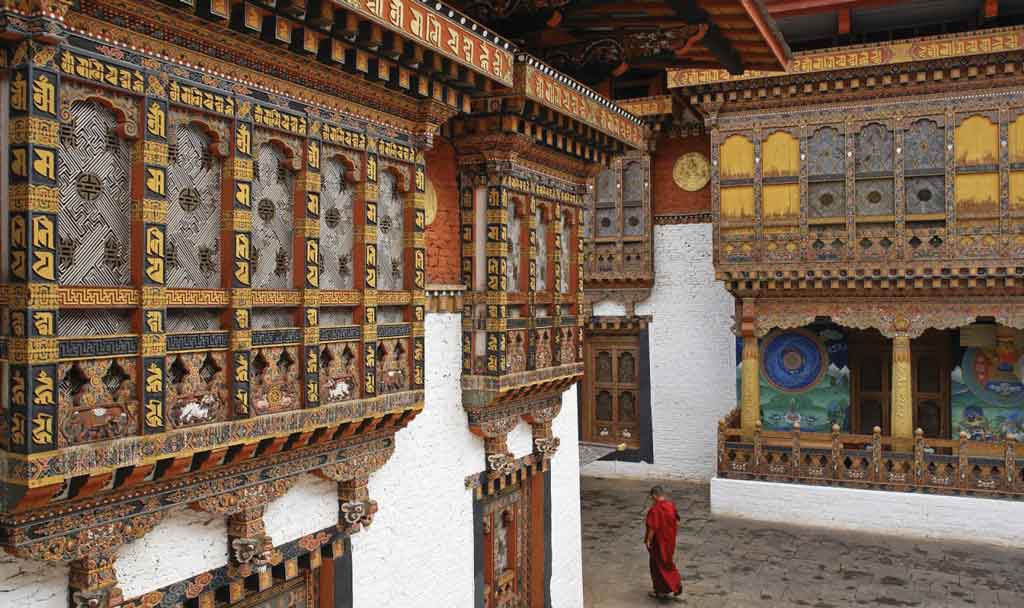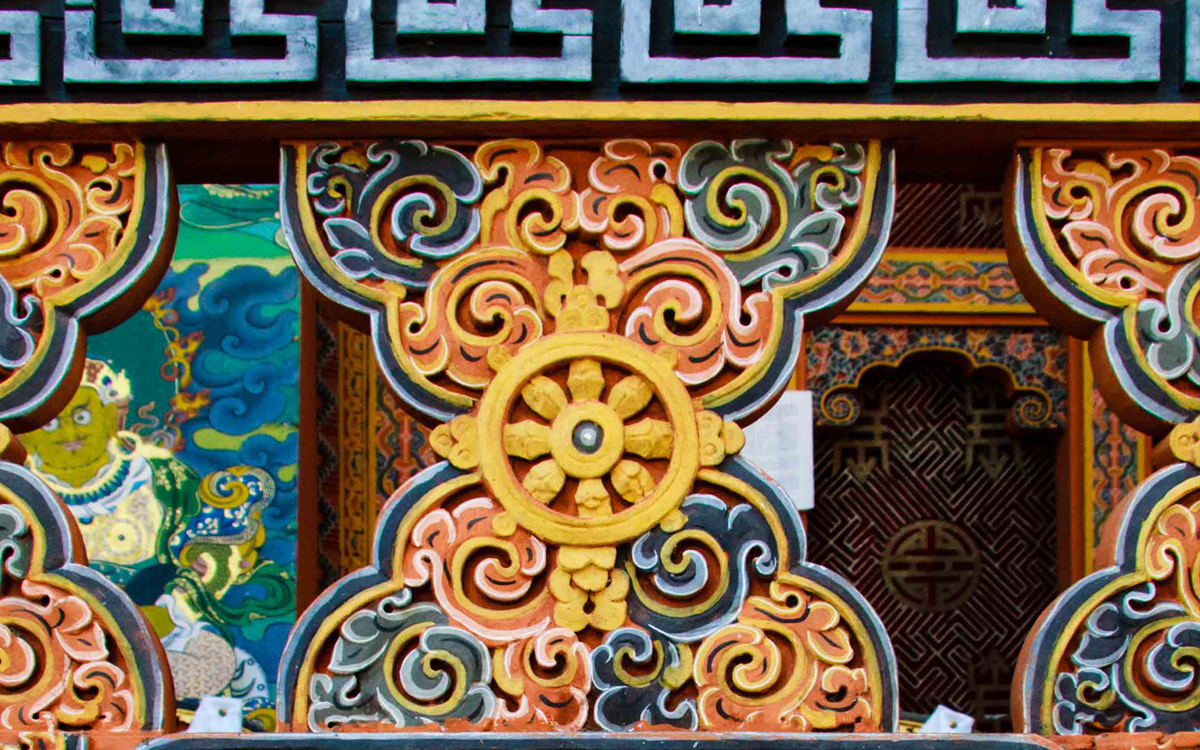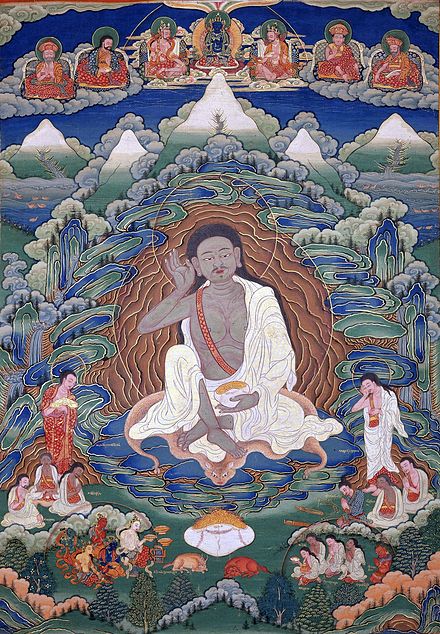Three characteristics are typical for Bhutanese art. Bhutanese art is anonymous religious and as a result it has no aesthetic function by itself.

The Traditional Arts And Crafts Of Bhutan Taste Of Bhutan
Traditional Bhutanese artists were however said to be bound by the very strict iconographic conventions in Bhutanese art.

. A set of eyes almost lost behind the mask peer through the gaping mouth. Bhutanese art and the Tibetan art is similar to. The development of arts and crafts in Bhutan can be traced back to the 15th-century terton treasure revealer Pema Lingpa.
The hundreds of sacred monasteries stupas religious institutions prayer flags and prayer wheels make Buddhism a faith that nowadays still is very alive and. Bhutan is a small landlocked country in the mountainous area north of India. Ad Shop By Location.
Previously all the religious texts as well as the official documents were written by hand. Master painters are known as Lha Rips and their work is apparent in everyarchitectural piece from the massive Dzongs to glorious temples. A ferocious mask with fangs punishing eyes and a crown of skulls fills the canvas.
The Bhutanese consider commissioning paintings and statues as pious acts which gain merit for the jinda patron. These masks invoke a feeling of worship. Traditional art has two important characteristics.
Bhutanese regard an artist as a religious man who creates the work commissioned by the patron. It is religious and anonymous. It has no independent aesthetic function it is religious and anonymous.
He was an accomplished painter metalworker sculptor and architect. An ancient art that has been practiced since antiquity paintings captures the imagery of the Bhutanese landscape. The influence of religion is highly visible in every day life and is a major reason for Bhutans spiritual and cultural legacy.
This painting of a traditional mask depicting a Buddhist deity is a modern take on what is traditional. The name of the jinda is sometimes written on the work so that their pious act may be remembered. Landscapes Skylines Popular Attractions History More.
Bhutanese culture and Buddhist influence go hand-in-hand. According to their tradition the arts are concerned with interpreting values rather than describing facts. Bhutan art of Zorig Chosum contains 13 arts and crafts.
Art here has two main characteristics. A Bhutanese does not view a painting or a statue as a work of art but as a religious work. Bhutanese arts and crafts have been undergoing a period of revival in recent years.
The name Bhutan is derived from a word that means the borderland of Bhot or Tibet. In 1680 the fourth desi Gyalse Tenzin Rabgye opened the School of Bhutanese Arts Crafts. This is all well explained in Françoise Pommarets Bhutan Himalayan Mountain Kingdom edited by.
Paintings are not signed paintings have no copyright. The Bhutanese themselves call their country Druk-Yul or the Land of the Thunder Dragon. Bhutanese paintings are quintessential of the arts and crafts tradition known as Lha-zo.
Bhutanese is the name given to the people who live in the Kingdom of Bhutan. Here we have mentioned about the 13 types of art crafts in Bhutan. Calligraphy is an ancient form of art that requires 6 qualities in his writing.
Up to 24 cash back Bhutans unique spirit and identity is also reflected in the arts and crafts which are all religiously rooted. All Bhutanese art dance drama and music has its roots in the Buddhist religion. Almost all representation in Bhutanese art music and dance has its roots in Buddhism.
On the other hand they had the freedom to bring out their own personalities in minor works. It is religious and anonymous.

13 Traditional Arts And Crafts Of Bhutan

13 Traditional Arts And Crafts Of Bhutan

Thangka Art Sunapati Art Thangka




0 comments
Post a Comment